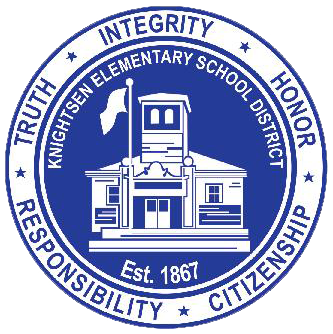3rd Grade Focus Standards
English Language Arts
RL 3.10- By the end of the year, read and comprehend literature, including stories, dramas, and poetry, at the high end of the grades 2-3 text complexity band independently and proficiently.
RI 3.10- By the end of the year, read and comprehend informational texts, including history/social studies, science, and technical texts, at the high end of the grades 2-3 text complexity band independently and proficiently.
RF 3.3- Know and apply grade-level phonics and word analysis skills in decoding words both in isolation and in text. CA
RF 3.4- Read with sufficient accuracy and fluency to support comprehension.
SL 3.1- Engage effectively in a range of collaborative discussions (one-on-one, in groups, and teacher-led) with diverse partners on grade 3 topics and texts, building on others’ ideas and expressing their own clearly.
L. 3.2- Demonstrate command of the conventions of standard English capitalization, punctuation, and spelling when writing.
L. 3.4- Determine or clarify the meaning of unknown and multiple-meaning words and phrases based on grade 3 reading and content, choosing flexibly from a range of strategies.
L. 3.6- Acquire and use accurately grade-appropriate conversations, general academic, and domain-specific words and phrases, including those that signal spatial and temporal relationships (e.g. After dinner that night we went looking for them).
L 3.5- Demonstrate understanding of word relationships and nuances in word meanings.
W 3.4- With guidance and support from adults, produce writing in which the development and organization are appropriate to task and purpose.
Mathematics
BIG IDEA: Represent Multivariable Data- MD.3, MD.4, MD.1, MD.2, NBT.1: Collect data and organize data sets, including measurement data; read and create bar graphs and pictographs to scale. Consider data sets that include three or more categories (multivariable data) for example, when I interact with my puppy, I either call her name, pet her, or give her a treat.
BIG IDEA: Fractions of Shape & Time- MD.1, NF.1, NF.2, NF.3, G.2: Collect data by time of day, show time using a data visualization. Think about fractions of time and of shape and space, expressing the base unit as a unit fraction of the whole.
BIG IDEA: Measuring- MD.2, MD.4, NBT.1: Measure volume and mass, incorporating linear measures to draw and represent objects in two-dimensional space. Compare the measured objects, using line plots to display measurement data. Use rounding where appropriate.
BIG IDEA: Addition and Subtraction Patterns- NBT.2, OA.8, OA.9, MD.1: Add and subtract within 1000 - Using student generated strategies and models, such as base 10 blocks. E.g., use expanded notation to illustrate place value and justify results. Investigate patterns in addition and multiplication tables and use operations and color coding to generalize and justify findings.
BIG IDEA: Number Flexibility to 100- OA.1, OA,2, OA.3, OA.4, OA.5, OA.6, OA.7, OA.8, NBT.3, MD.7, NBT.1: Multiply and divide within 100 and justify answers using arrays and student generated visual representations. Encourage number sense and number flexibility - not “blind” memorization of number facts. Use estimation and rounding in number problems.
BIG IDEA: Square Tiles- MD.5, MD.6, MD.7, OA.7, NF.1: Use square tiles to measure the area of shapes, finding an area of n squared units, and learn that one square represents 1/nth of the total area.
BIG IDEA: Fractions as Relationships- NF.1, NF.3: Know that a fraction is a relationship between numerators and denominators – and it is important to consider the relationship in context. Understand why 1/2=2/4=3/6.
BIG IDEA: Unit Fraction Models- NF.2, NF.3, MD.1: Compare unit fractions using different visual models including linear models (e.g., number lines, tape measures, time, and clocks) and area models (e.g., shape diagrams encourage student justification with visual models).
BIG IDEAS: Analyze Quadrilaterals- MD.8, G.1, G.2, NBT.1, OA.8: Describe, analyze, and compare quadrilaterals. Explore the ways that area and perimeter change as side lengths change, by modeling real world problems. Use rounding strategies to approximate lengths where appropriate.
